

Influence of Grades of Cement on Strength of Concrete as per IS 10262-2019
Abdul Azeez Khan1, Sharath Babu Khedagi2, Santosh R3
1M.Tech Student, 2Assistant. Professor, Department of Civil Engineering, East Point College of Engineering & Technology, Bangalore, India
3Assistant Professor, Department of Civil Engineering, Sapthagiri College of Engineering, Bangalore , India
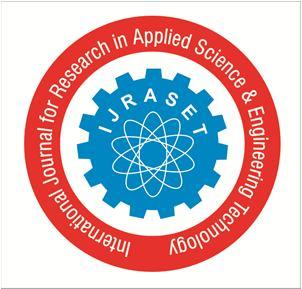
Abstract: Concrete is the most used material in the world for construction. As we know Cement is the major constituent of concrete which is produced by natural raw materials like limestone rock, clay and chalk etc. Cement is produced in various grades and types used for construction according to the requirement. According to various grades used the strength of the concrete is influenced. The present investigation deals with the development of mix design of concrete using the IS 10262 2019.
The study mainly focuses on the discussion of strength characteristics of concrete when various grades of cements used with reduction of 5% & 10% to understand if the concrete reaches the required target strength. It also focuses on understanding as to which grade of cement would be able to reach the required strength with less cement content. Compression test and Split Tensile test were conducted for strength analysis. The research evaluates the variation in Mix Design Guidelines between IS 10262 2009 & IS 10262-2019; strength factors of hardened concrete, by using various grades of cement at different percentages for M30 grade concrete at different ages. From this study it can be concluded that, 53 grade gives the better compressive strength with lesser amount of cement content, hence it is suggested that 53 grade cement can be used wherever bulk or mass concreting is done or concrete is produced
Keywords: Mix Design, Concrete, Cement, OPC 53, OPC 43, PPC, Compressive Strength, Split Tensile Strength.
I. INTRODUCTION
Any material or substance used to construct any type of structure is referred to as a building material. The construction business uses a variety of materials for construction. Depending on their structural capacities, we use various materials. Building materials used in construction are governed by regional and national standards. Architects, on the other hand, select building materials based on cost & beauty. By selecting the best material for the project, it may improve and extend its lifespan. One of the most common building materials utilised globally is concrete. Its main benefit is that, because it is a manmade substance, one may pour it into moulds of any shape before setting, eliminating the need to carve the material as is necessary with stone. Another benefit is that its characteristics can be significantly customised to fit various situations. Cement, Coarse Aggregate (range of 5 20 mm), Fine Aggregate, and Water are the essential components of concrete. Only the cement, which makes up around 15% of the total weight of the concrete and is utilised in very tiny amounts compared to the sand and gravel, is an element that is produced industrially.
Compared to steel, concrete is therefore a less expensive building material. The quality of the component materials and the proportions used in the mix, however, determine the quality of the concrete that is created; the characteristic strength of the concrete decreases with increasing sand content in clay and silt.
A. Cement
There are various types of cement are used for various purposes in construction depending on the environmental condition of the region.

(IJRASET
ISSN: 2321 9653; IC Value: 45.98; SJ Impact Factor: 7.538 Volume 10 Issue IX Sep 2022 Available at www.ijraset.com

B. Cement Consumption
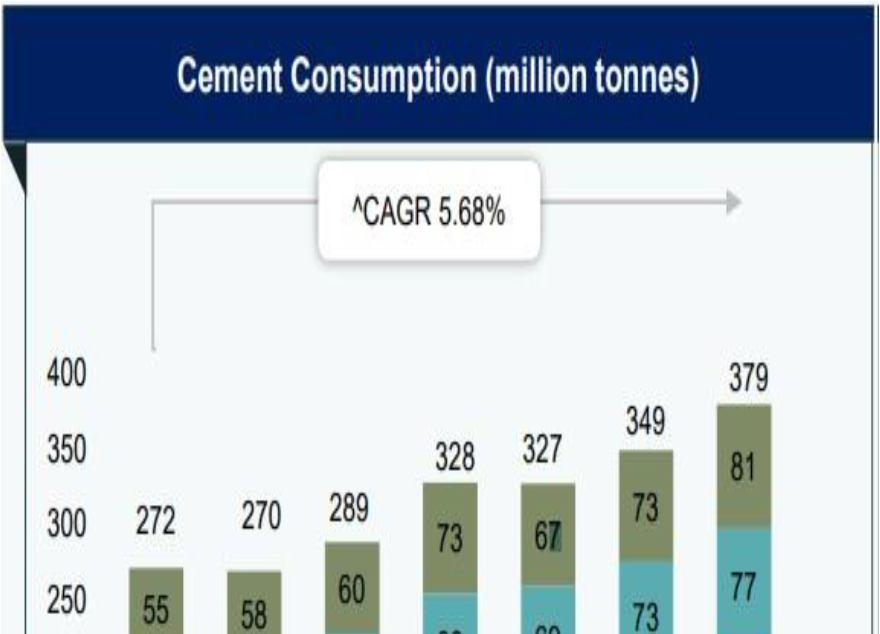
India ranks second in the world in terms of cement production and consumption, the real estate market is booming and the government is investing heavily in urban infrastructure and smart cities. According to CLSA (Credit Lyonnais Securities Asia), demand for cement in India has increased.
1) The company identifies ACC, Dalmia and Ultratech Cement as key partners. Indian cement companies recorded a significant increase in profitability and industrial demand
2) The company identifies ACC, Dalmia and Ultratech Cement as key partners. Indian cement companies recorded a significant increase in profitability and industrial demand in the second quarter of FY21 as a result of the recovery in the rural economy.
3) With rural markets returning to normal, the demand picture remains encouraging.
4) For fiscal 2021, CLSA (Credit Lyonnais Securities Asia) expects 14% growth in EBITDA (earnings before interest, tax, depreciation and amortization) for its cement merged companies.
5) In the wake of the COVID 19 pandemic, infrastructure and real estate industries are expected to expand, leading to increased demand for cement in 2021. The industry is expected to increase cement production capacity by 8 million metric tons annually.
6) Demand from road construction, urban infrastructure and commercial real estate is expected to drive cement production in India between FY2016 22 at a compound annual growth rate (CAGR) of 5.65%. Cement consumption in India is expected to grow at a compound annual growth rate of 5.68% from FY16 to FY22.
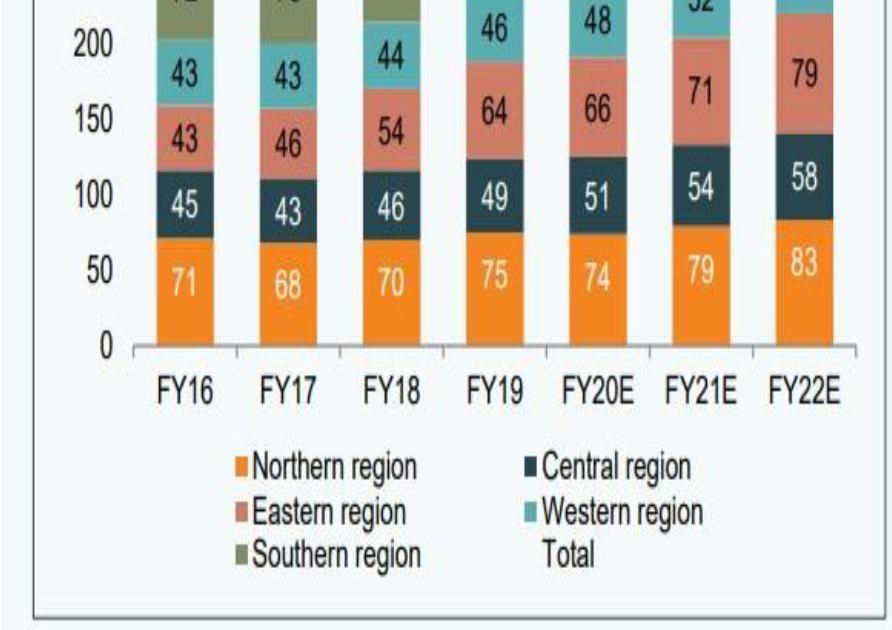
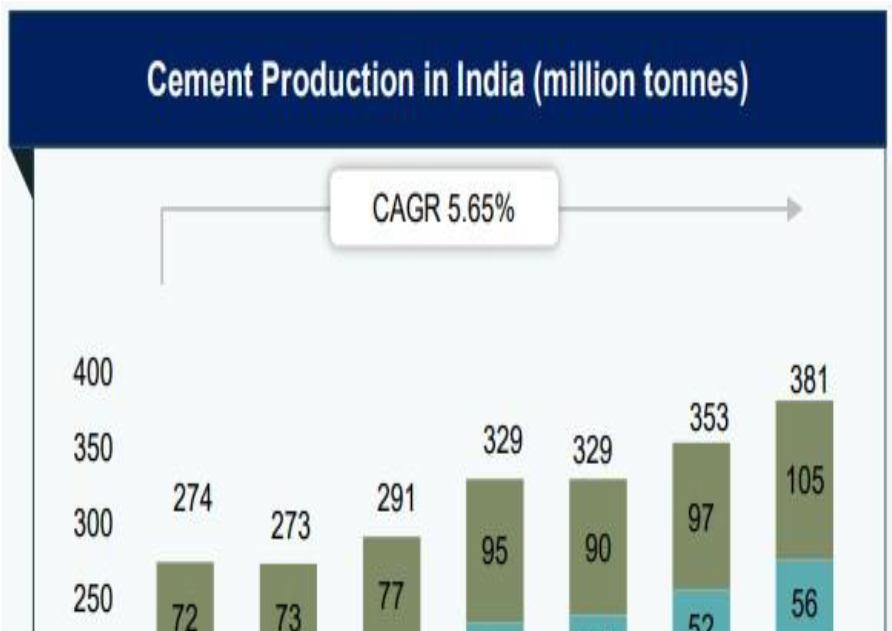
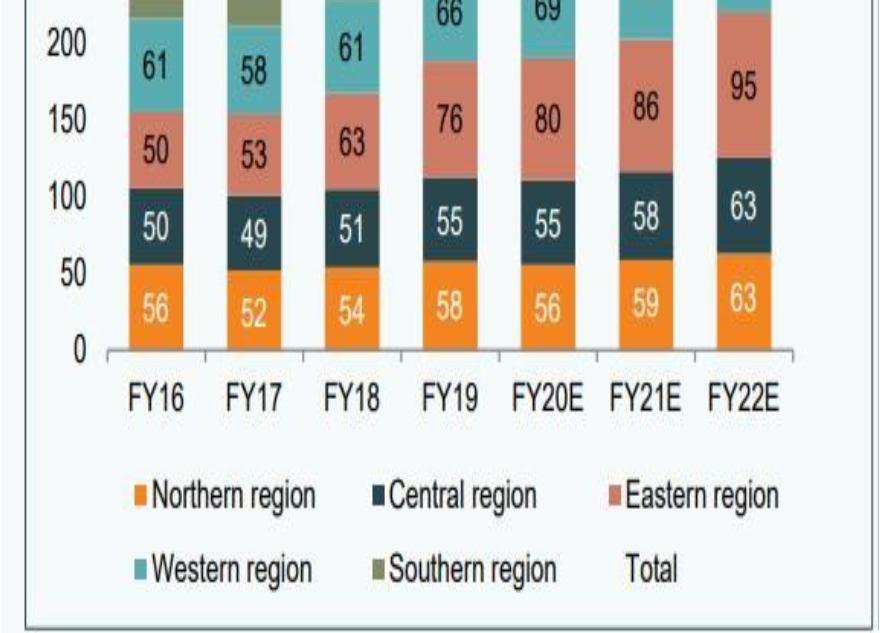
7) Cement production increased to 329 million metric tonnes in FY20 and is expected to increase to 381 million tonnes in FY22.
II. METHODOLOGY

This chapter deals with the methodology followed to carry out the study. It consists of detailed experimental work carried out in the characterization of materials like cement, water, super plasticizer, fine aggregate, coarse aggregates, are characterized through a series of physical tests.
After the testing of materials, the next step is to go about preparing the specimens. Mix design is done as per IS 10262:2019 to obtain mix proportion such that the targeted compressive strength is achieved. Cubes & cylinders are casted.
ISSN: 2321 9653; IC Value:
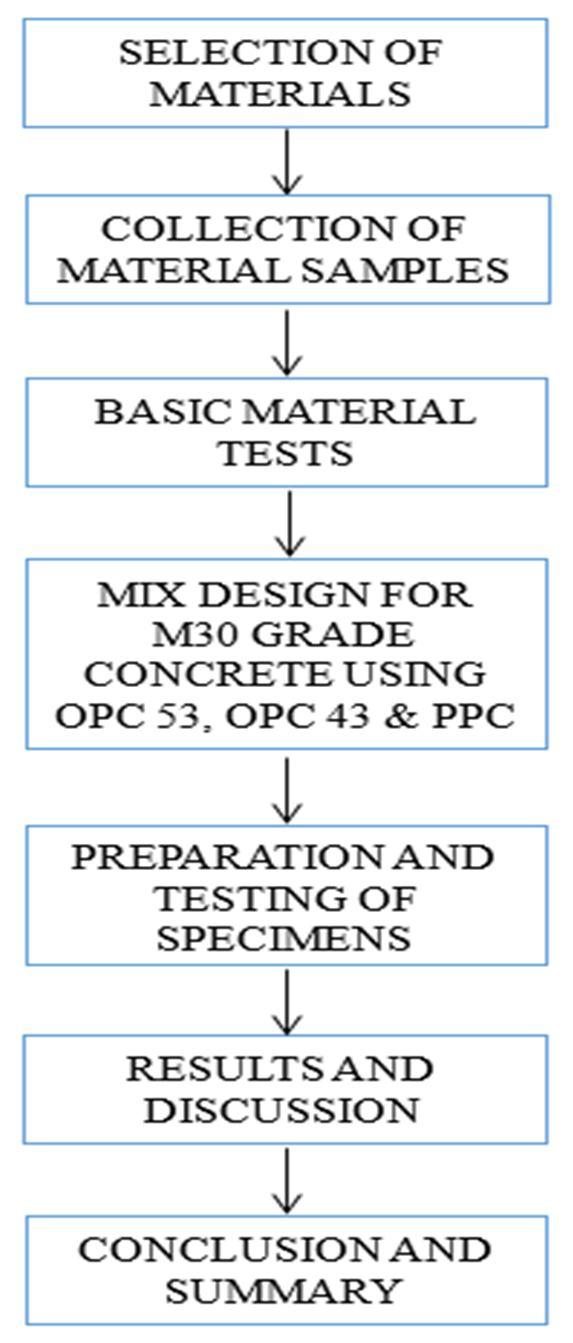
10

www.ijraset.com

ISSN: 2321 9653;
1.36

Value:
at www.ijraset.com

10262: 2019.
details of the combination,
1 (Cement): 2.26 (Fine aggregate): 3.05 (Coarse
Table 3.
ISSN: 2321 9653; IC Value:
Issue
Sep
www.ijraset.com

OPC 53
CM (Strength In N/mm2)
5% RED (Strength In N/mm2)
10% RED (Strength In N/mm2)
CM (Strength In N/mm2)
OPC 43
PPC
5% RED (Strength In N/mm2)
10% RED (Strength In N/mm2)
CM (Strength In N/mm2)
5% RED (Strength In N/mm2)
10% RED (Strength In N/mm2)
27.56
35.64 35.02
40.00 40.1628.13 34.53 37.78 26.40 34.89 42.27
27.02
34.04 33.20
39.29 39.0425.78 32.44 37.16 26.49 33.11 40.67
26.87 26.04
32.56 32.58
38.72 38.8325.97 33.25 39.53 25.58 31.93 38.26
26. 03 25.92

34.43 34.67
39.63 38.9926. 12 35.57 38.21 25.61 34.01 39.15
25.61 25.44
32.01 31.91
37.31 37.6425.21 32.20 37.97 25.52 31.53 37.66
25.19 25.14
32.03 31.49
36.21 36.5925.22 31.35 36.64 25.02 31.09 36.93
26.32 26.62
34.73 34.96
40.09 39.7127.03 35.43 38.67 26.51 34.71 40.37
26.02 25.98
32.97 32.81
37.51 38.4825.83 32.12 39.26 26.09 33.36 38.67
26.11 25.49
32.02 32.25
36.21 37.2625.17 32.69 38.35 25.20 32.04 37.24
ISSN: 2321 9653; IC Value:
10 Issue IX Sep
SJ Impact
7.538
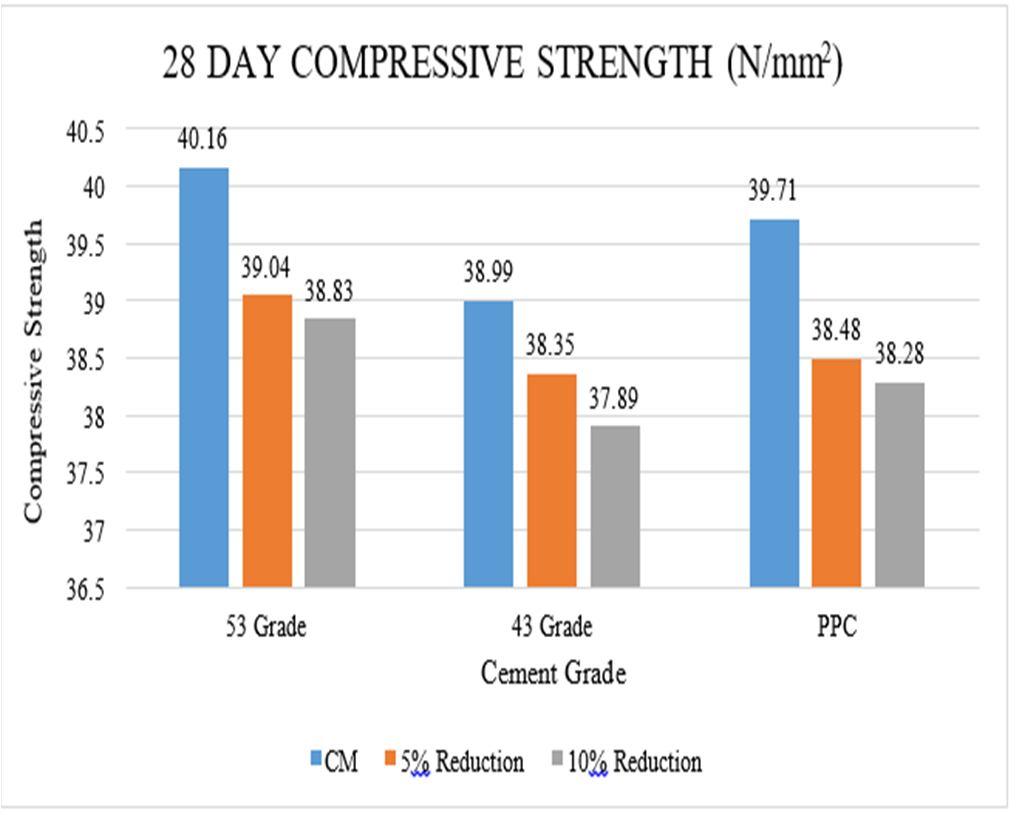
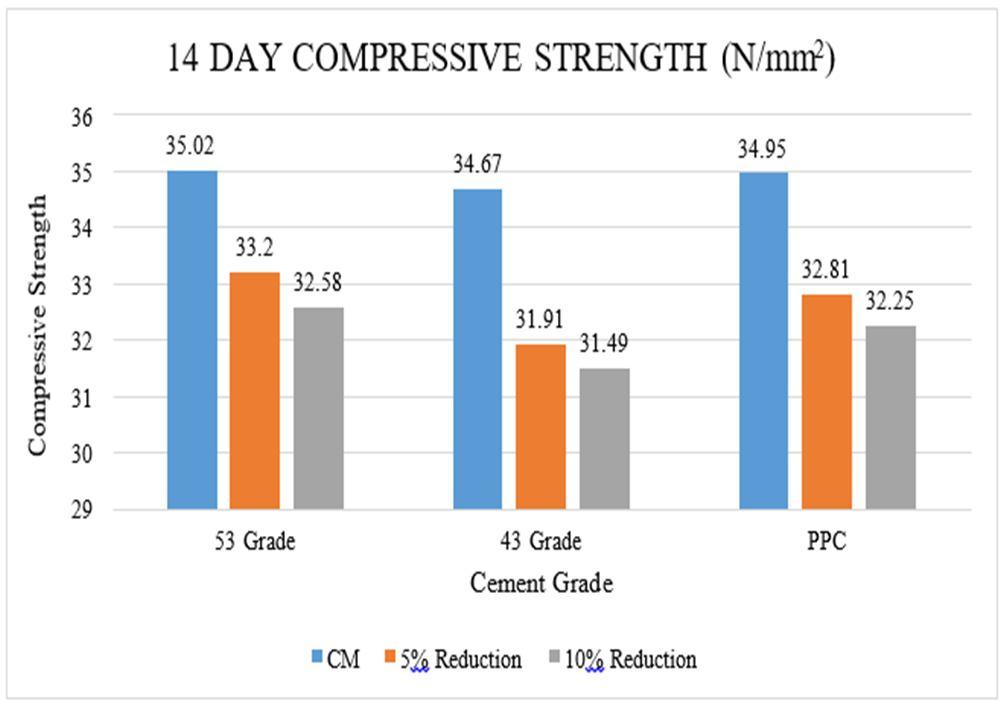
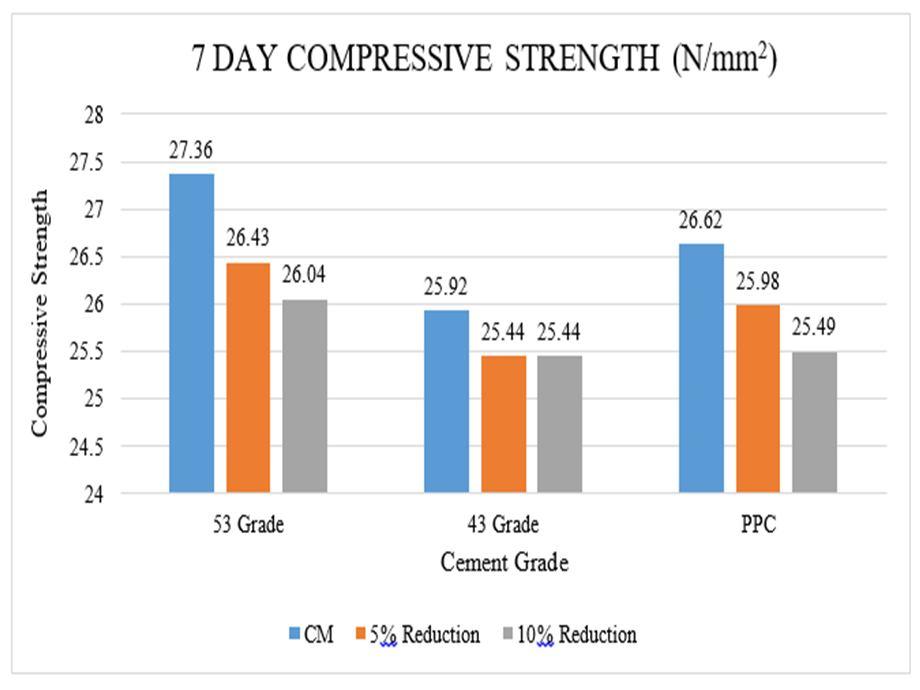

at www.ijraset.com

The
Fig
The
Fig
The
OPC
OPC

ISSN: 2321 9653; IC Value: 45.98; SJ Impact Factor: 7.538
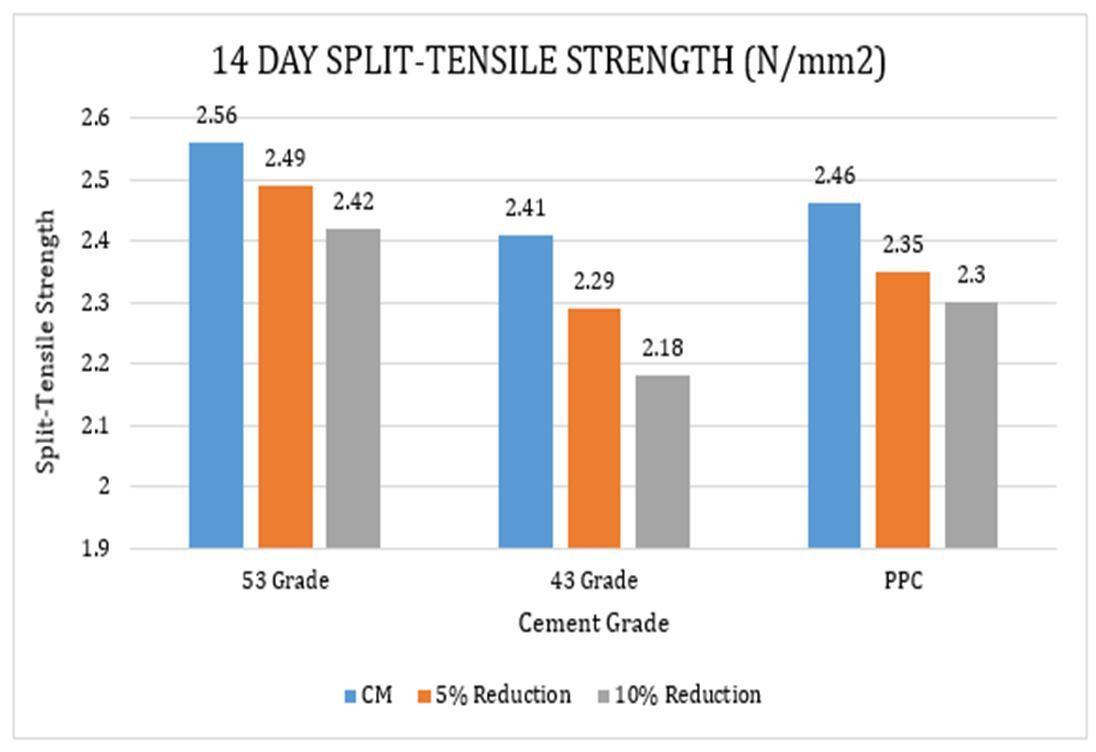
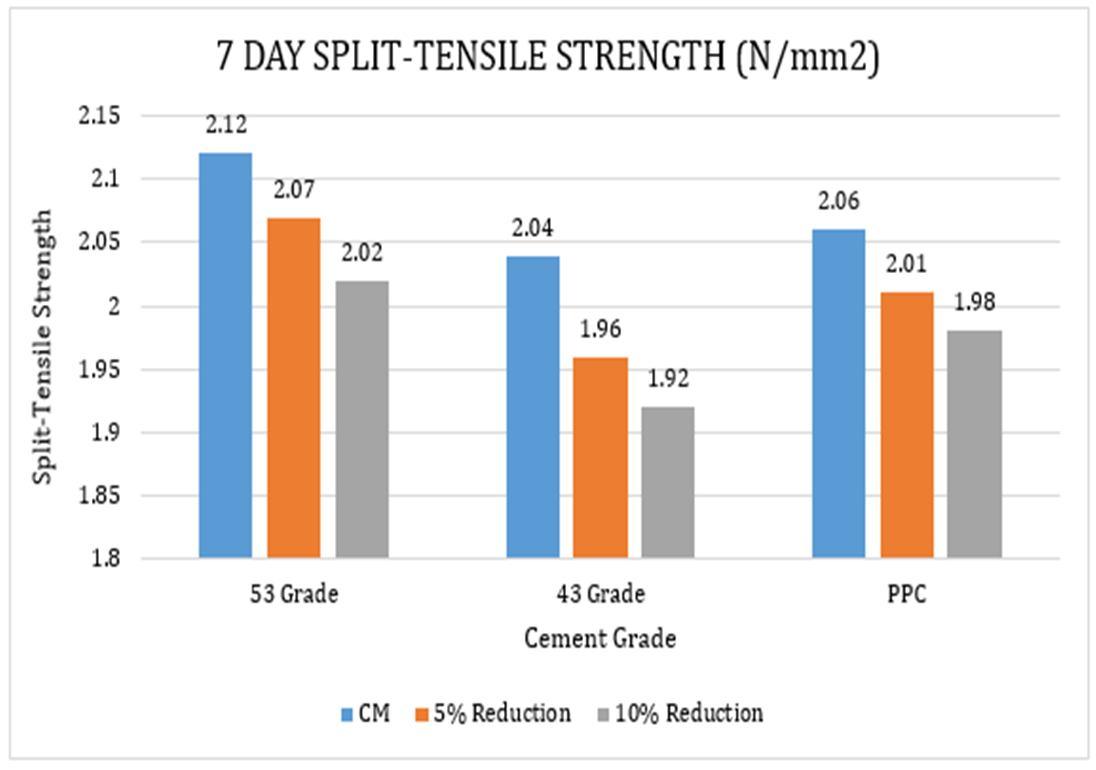

10 Issue IX Sep 2022
at www.ijraset.com
2.12 2.56 3.02
2.07 2.49 2.91
2.02 2.42 2.89
2.04 2.41 2.91
1.96 2.29 2.81
1.92 2.18 2.63
2.06 2.46 2.98
2.01 2.35 2.85
1.98 2.30 2.72


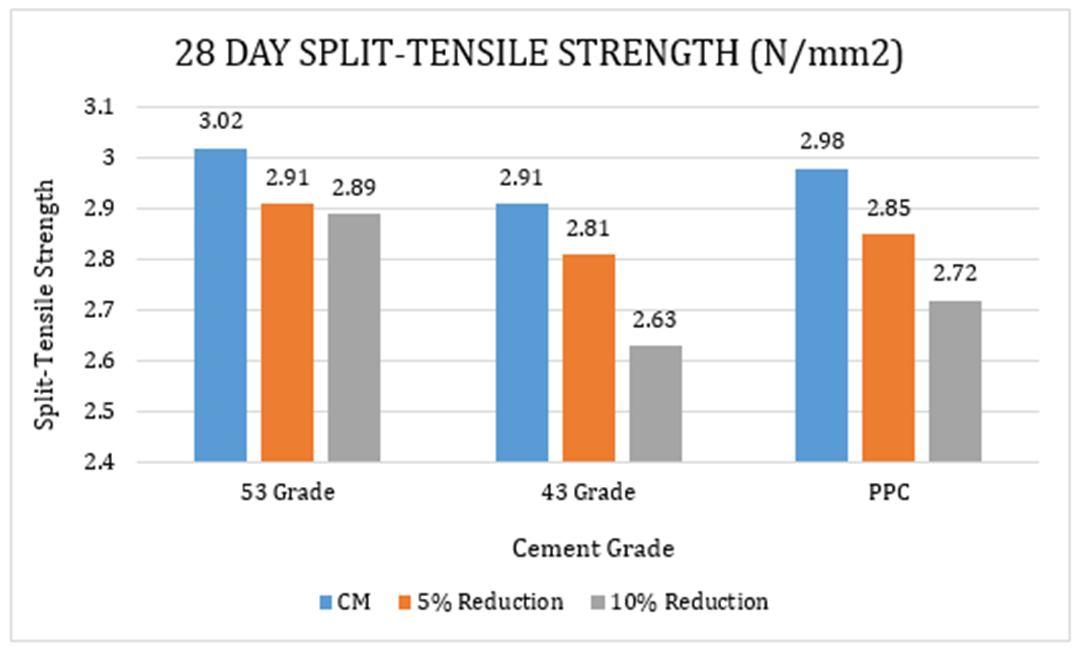
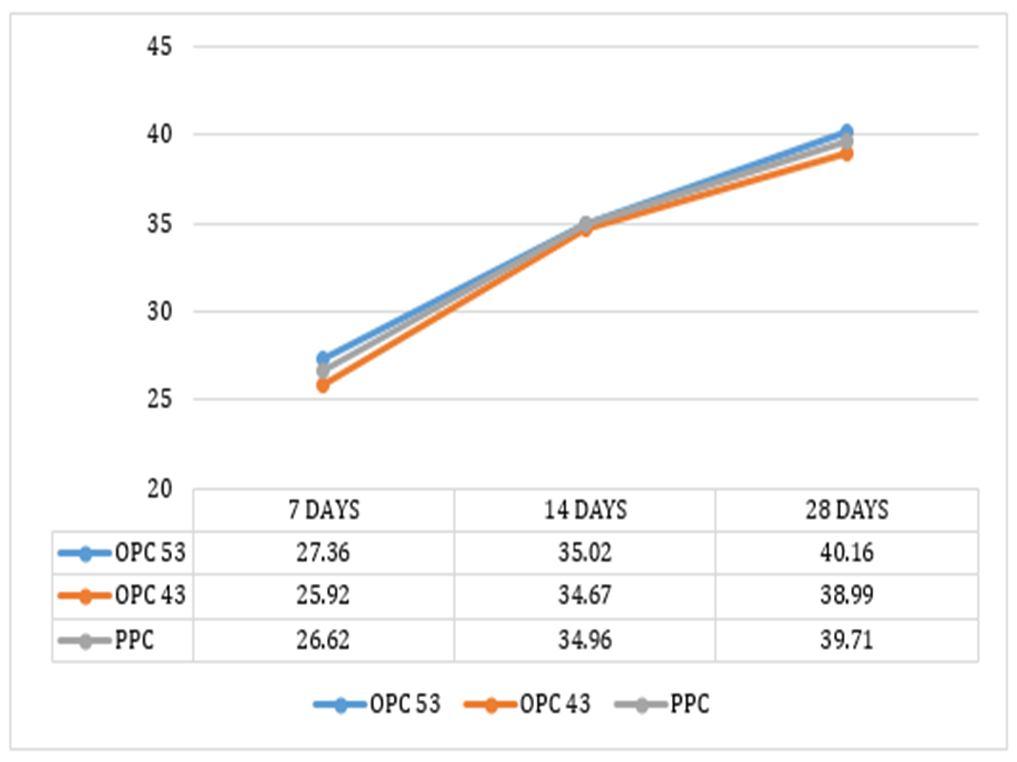
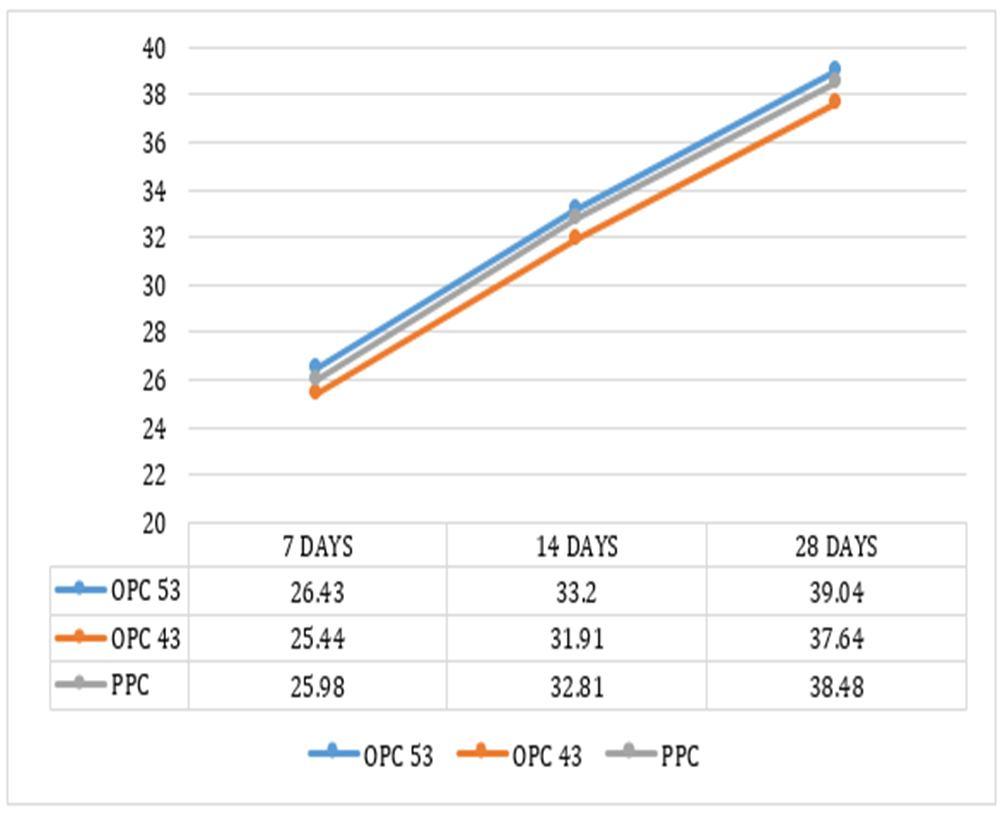
ISSN: 2321 9653; IC Value: 45.98; SJ Impact Factor: 7.538 Volume 10 Issue IX Sep 2022 Available at www.ijraset.com
IV. CONCLUSION
In summary this report documents the variation in Mix Design between IS 10262 2009 & IS 10262 2019. It also documents the strength of concrete and its variations when various grades of cement are used in various proportions. The strength parameters whose variations was reported were compressive strength and split tensile strength. After studying the compressive strength value of specimen consisting of assorted grades of cement having different percentages and curing it for 7, 14, 28 days it is concluded that:
1) By adding a replacement factor supported the grade of the concrete, the formula for the target mean strength for mix proportioning has been improved. it had been done to form sure there was a minimum margin between the required mean strength and therefore the characteristic compressive strength.
2) In place of the basic assumption regarding the water cement ratio, a graph of W/C vs. 28 day concrete strength was introduced, accounting for various cement types and grades.
3) The concept of air content was once again incorporated into the formulation of the typical concrete mix proportion.
4) The early strength obtained in concrete consisting OPC 53 is up to 70% (7 days) which is approximately 3% and 2% more than that of OPC 43 and PPC respectively.
5) It can be observed that in OPC 53 achieves the required target mean strength i.e. 38 MPa in the control mic and even after 5% and 10% reduction of cement.
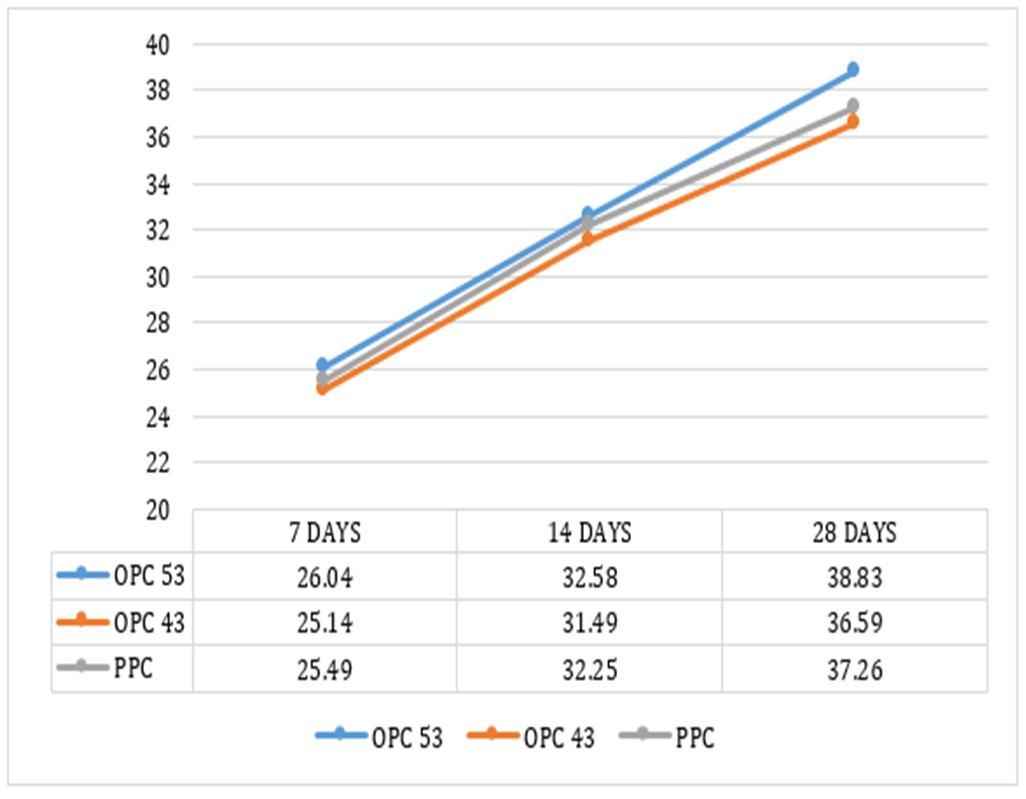

6) In PPC it is observed that the target mean strength is achieved in control mix and only in 5% reduction of cement but when it is reduced by 10% it is observed that the strength achieved is less than the target strength.
7) In OPC 43 it is observed that the target strength is only achieved in the control mix.
8) The split tensile strength shows a substantial decrease in the different grades used for all the days (7,14 & 28 days).
9) As per current work done it can be said that 53 grade gives the better compressive strength with lesser amount of cement content, hence it is suggested that 53 grade cement can be used wherever bulk or mass concreting is done or concrete is produced
REFERENCES
[1] Anum I, Williams, F.N, Adole, A.M & Haruna, A.C; (2014), “Properties of Different Grades of Concrete Using Mix Design Method”, “International Journal of Geology”.
[2] Cătălina Mihaela Helepciuc (Grădinaru); (2017), “The Environmental Impact of Concrete Production and the Necessity of Its Greening”.
[3] Dhaval Dudakiya, Shah Dhruv, Dhwani Patel & Shweta J Chauhan; (2017), “Engineering Properties of Ready Mix Concrete”, “IJSRD International Journal for Scientific Research & Development”.

[4] Lezhinka Sozaeva & Arthur Kagermazov; (2020), “Environmental impacts of mining and processing of sand gravel mix”
[5] Podila Sankara Pitchaiah; (2017), “Impacts of Sand Mining on Environment”, “SSRG International Journal of Geo informatics and Geological Science (SSRG IJGGS)”.
[6] Santhosh R & P.Shivananda; (2017), “A review of Concrete Mix Designs”, “International Journal for Research in Applied Science & Engineering Technology (IJRASET)”.
ISSN: 2321 9653; IC Value: 45.98; SJ Impact Factor: 7.538

Volume 10 Issue IX Sep 2022 Available at www.ijraset.com
[7] Shah, Khem R, Thakur, Mukesh, Yadav, Prabin K, Sah, Hari N; (2021), “Effects of Grades of Cement on Strength of Concrete”, “Department of Civil Engineering, Central Campus, Institute of Engineering, Tribhuvan University”.
[8] Sorate Shekhar M & Thool Kushal P; (2020), “Experimental Investigation On Mix Design of Concrete by Using IS Method and ACI Method”, “IJCRT”.
[9] Swades Pal & Indrajit Mandal; (2018), “Impacts of stone mining and crushing on environmental health in Dwarka river basin”
[10] Tejashree Gulve & Vaishnavi Battul; (2018), “A Study of Mix Design Adopted in RMC”, “Journal of Advances and Scholarly Researches in Allied Education”.
[11] Velu Saraswathy, Subbiah Karthick, Han Seung Lee, Seung Jun Kwon & Hyun Min Yang; (2017), “Comparative Study of Strength and Corrosion Resistant Properties of Plain and Blended Cement Concrete Types”
[12] IBEF Presntation, HDFC Securities, Cement April 2021
Code Books
1) IS 383: 1970: Specifications for Coarse Aggregate & Fine Aggregate from Natural Sources for Concrete
2) IS 8112: 1989: Ordinary Portland Cement 43 Grade Specification.

3) IS 456: 2000: Plain & Reinforced Concrete Code of Practice.
4) IS 2386: 1963 Part III: Methods of Test for Aggregates for Concrete.
5) IS 10262: 2019: Concrete Mix Proportioning Guidelines
6) IS 10086: 1982: Specification for Moulds for Use in Tests of Cement & Concrete
7) IS 516: 1959: Methods of Tests for Strength of Concrete
8) IS 5816: 1970: Splitting Tensile Strength of Concrete Method of Test

